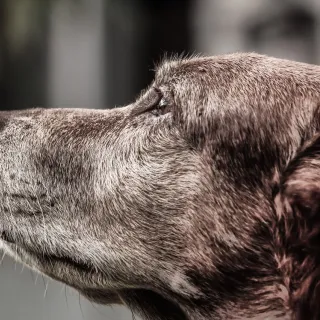How to Safely Bathe Your Senior Dog
This article originally appeared on Neutricks and has been republished with their permission.
Bathing a dog is quite an adventure for the both of you, but bathing a senior dog, who may have certain health issues, can be a challenge. Added care and planning must be taken into consideration to ensure that bath time is both safe and as enjoyable as possible for the both of you.
Senior dogs with certain health issues, such as arthritis or visual impairment, require extra attention when taking a bath. Bathe your dog during the day at a time when both of you are active during the day. Plan to take a chunk of time out of your busy schedule to do it so you won’t feel rushed or stressed.
The Tools You’ll Need
Senior dogs have very special coats and skin at their age. Their skin begins to dry out more often and their coats will turn more coarse as they age, so having a shampoo and conditioner that is designed for sensitive, dry skin and coarse fur is your best bet. If you can, use a shampoo and conditioner that is specifically designed for both senior dogs and the exact breed of dog you have.
You’ll also need a couple of warm, soft towels, a brush or a comb, a large cup, and maybe even a soft washcloth for using in the bath. Make sure that everything is set aside close enough to be within your reach.
It’s also a good idea to have the towels laid out and set up before your dog goes into the bath in case you don’t have a chance to set them up as you bathe him. Senior dogs take shocks of cold air much differently than younger ones do, so wrapping them up immediately after they are out of the water is ideal.
Proceeding With Bath Time
Plunking your senior dog into a full bath is not always the best idea. Doing so could set off alarm bells and cause them to get anxious or even scared. Specifically, senior dogs with visual impairment should not be dunked in..
As a general rule of thumb, have your dog in the bathroom with you while the tub is filling up with lukewarm water. Visually impaired senior dogs should be able to hear what’s about to happen.
Once the tub is filled about halfway, carefully lift your dog into the tub. You should constantly be speaking to and praising him with loving attention. Once they are in the tub use the large cup to cover them with water and ensure that they are completely soaked through the coat.
Next, lather your senior dog up and massage their skin and coat. If your dog has arthritis problems, massaging those areas while lathering them up will definitely help and make them more relaxed. Use a calm, soothing voice while doing so. The washcloth is great for washing their facial and neck areas, as well.
Rinse him thoroughly with the lukewarm bath water and massage the conditioner through the coat and down to the skin. Massaging their sore areas again is a good idea. Once this part is finished, rinse your dog out thoroughly.
Help safely remove your dog from the bathtub, wrap him up and dry him off using the towel, and allow him to shake if he wants to. Brush the fur out gently and allow your dog to have a much-needed rest.
If your senior dog is still able to have treats, now would definitely be the appropriate time to give him one. Bath time for your senior dog does not have to be a painful chore for either of you, as long as it’s done safely!
See the original article by Neutricks
Anna shares her dog-loving passion with the world. She likes to give her dogs the best of everything and bring helpful, interesting information to her readers. Learn more at http://thinkofpuppy.com/



